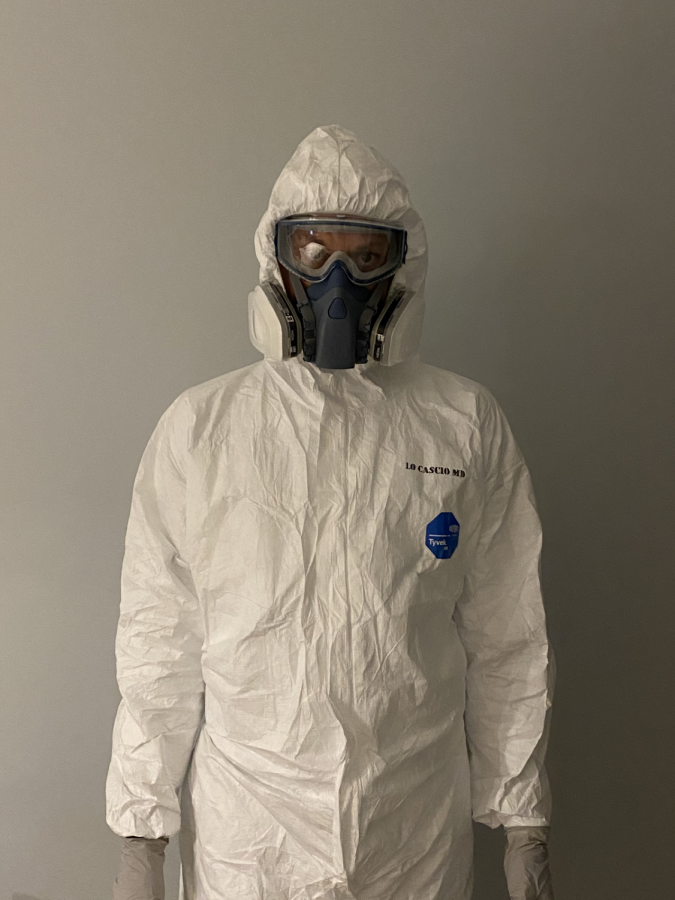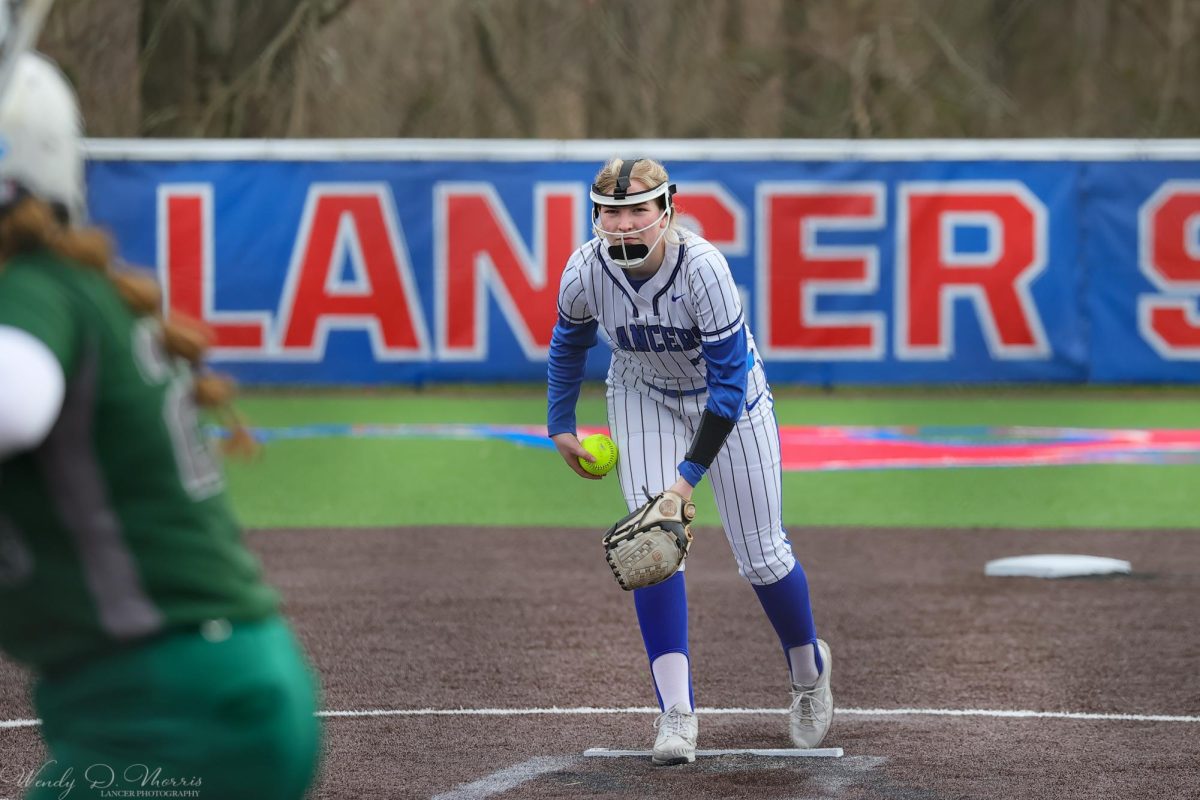New York City Pulmonologist Talks About his Experience Working with COVID-19 Patients
April 20, 2020
Dr. Christian LoCascio is a pulmonary fellow at Mt. Sinai Hospital in New York City. He was a doctor in Zurich, Switzerland before moving to the U.S. a few years ago. He has been working with many COVID-19 patients since the beginning of the outbreak.
- How long were you a doctor in Switzerland and how much time do you have left in your fellowship?
I graduated from Medical School in 2003. I am a fully board certified pulmonologist and internal medicine doctor in Europe. Unfortunately European and Swiss diplomas are not recognized in the U.S. I therefore had to go through residency and fellowship again and likely will graduate in 2022.
- Tell me about your experience working with COVID patients.
I work for one of the largest hospital systems in NYC as a pulmonary (lung) and critical care specialist. Therefore my daily work is dominated almost exclusively by COVID patients. Most of the patients I take care of are severely sick. I am responsible for seeing these patients in the emergency room or on the floor, if they have been better previously and now got worse. Depending on how they are doing, we then either take them into one of our intensive care units (ICU) or support the primary teams on the floor with medical advice. We had to largely expand our intensive care capacities. Besides the original medical ICU we re-purposed surgical and neurological intensive care units, intermediate care units, as well as the post anesthesia care units to become medical ICU’s. This means a lot more work for us, because we also need to guide the staff of these units who are not necessarily trained in internal medicine about how to provide adequate care for these patients.
- What types of protective gear do you use? How effective do you feel this gear is?
We typically use N95 respirators (respirators that block at least 95 percent of very small (0.3 micron) test particles), surgical gowns, gloves and face shields to prevent getting infected. SARS-Cov 2 (the virus that causes COVID) is spread by droplet infections and therefore we must be careful not to inhale secretions or touch contaminated surfaces. Even though surgical masks typically are sufficient to capture droplet transmitted infections, we wear N95 respirators. Particularly for procedures for which we know there is a lot of aerosolization of secretions, like intubation, etc, full protective clothing with respirators is important, due to the potential severity of the disease if we get infected ourselves. The gear itself is effective, however the big issue is the fact that no hospital is built to provide isolation rooms and space to properly change in and out of the protective gear for this number of patients. Cross contamination, meaning carrying infectious particles out of the room and eventually infecting staff and or other patients is almost inevitable under those circumstances.
- Are you worried about becoming infected?
I think everyone is worried about becoming severely infected, even if a lot of the staff working in the hospitals is younger than your typical patients. We try to manage it as good as possible given the mentioned circumstances.
- There has been a lot of discussion about the lack of resources for hospitals, has that affected you at all?
Lack of resources is a major issue. While my employer was diligent about stocking up early when the pandemic was still in development, the sudden need for an exponential amount of for example N95 masks is still a major issue. While the policies during normal operations is that these masks are single use the current policy is to use them at least for a whole shift. We now wear the thinner surgical masks over the N95 respirators to keep the surfaces of the N95 “clean enough” to hopefully not transmit any infectious agents to ourselves or other patients. N95 masks are now being collected after use for refurbishing as well. I for my part invested a non-trivial amount of money into my personal protective gear, such as reusable respirators that filter to a higher degree and can be easily cleaned. There is no guarantee that supplies at the hospital will be sufficient for a prolonged period of time. A big issue is that we have many more patients that need ventilators. Many have such severe lung damage that they do not get enough oxygen into their bloodstream and need mechanical support and a high percentage of oxygen in the air they inhale. These are highly specialized machines, that not only are in itself very limited but also require trained staff to operate and provide adequate care for patients that are hooked up to these machines. We are currently repurposing travel ventilators and operating room ventilators for inpatients. Likely we will soon have to make the hard decision whether we can offer ventilation at all, particularly for very sick patients with a lot of other medical problems and advanced age and little chance for recovery.
Unfortunately not everyone has realized the severity of the situation and the urge for additional means particularly on a national level. Existing infrastructure has been limited by the current government and the National Strategic Stockpile is not only inadequately stocked to support a pandemic of this extent. The current stockpile has also not been appropriately managed and was underfunded. Some of the supplies like ventilators are no longer in working condition, respirators have expired and the national government is basically telling each state to look for itself.
- How does the current outbreak change your work from what you normally do?
Our work becomes more challenging not only because of the additional work hours but also because of the emotional stress of constantly having to work in an environment that poses a significant health hazard to ourself. Ever increasing patient load requires frequent changes in policies, clinical practice and effort all with dwindling resources. Any non-urgent procedure has been halted. Outpatients were asked to only come into our offices for truly emergent visits. Visits that can be managed by telehealth are being seen remotely. All the other visits have been cancelled. Many tests such as lung function tests and bronchoscopies are no longer offered or offered only in the most urgent cases as risk for staff and other patients would not justify potential benefit for the patient care.
- Any other thoughts on the COVID pandemic?
A pandemic with a new type if coronaviruses is not completely unexpected. Both SARS-Cov1 and MERS were Coronavirus epidemics. These were fortunately never as extensive in terms of infection, but should have been taken more seriously. While the Obama administration instituted The Global Health Security and Biodefense unit in 2015 exactly for that purpose the current government restructured it to the point that the “pandemic response team” failed to act timely and decisively. Our current president not only ridiculed the threat of COVID-19, but blatantly failed to take appropriate action.
For individuals the most important way of keeping themself, their loved ones and the community healthy is to stay at home. Limit time outside your home for essential trips like grocery shopping. If you have to leave the house stay at least 6 feet away from others. Simple cloth masks or if available surgical masks provide some additional protection. Gloves are likely not helpful for most daily activities like shopping. Anything that you touch with your gloves and that you will keep has the potential to be a fomite (objects or materials which could carry infection, such as clothes, utensils, packes, furniture etc) and transmit the virus to you later after you took your gloves off. It is essential however to wash your hands frequently or use hand sanitizer. Avoid touching your face and cover your face with a tissue or your elbow. when you have to sneeze or cough.







